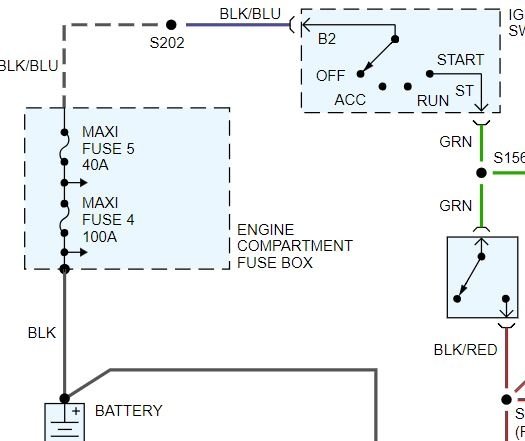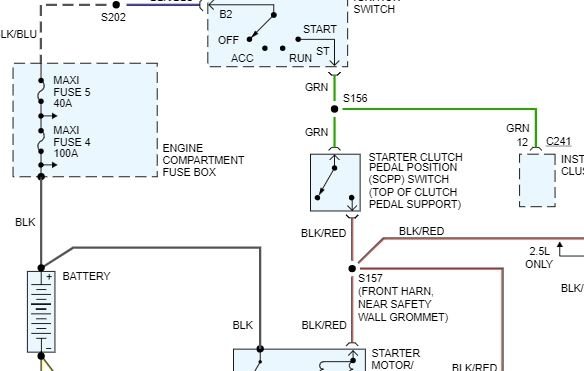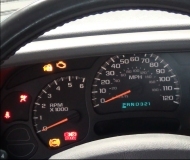Bit of a lengthy post, but I just want to provide all the details I can in case anyone here is able to help.
My son recently bought the car listed above (GT model) as his first car. When he was driving it for the first time, after about ninety minutes, the engine shut off and it would not restart. When you turn the key absolutely nothing happens, no sound, nothing. The dash lights do not come one, radio does not work and neither does the heater. The headlights and interior lights work though.
To rule out it being a faulty starter I ran power directly from the battery to the S terminal on the solenoid and the engine turned over. But when I check for power at the S terminal on the solenoid when the key is turned to the start position I got nothing so I thought maybe it was the ignition switch causing the problem, but after doing continuity testing as per the Haynes manual, the ignition switch checked out fine.
Next I checked for incoming power to the ignition switch thinking there might be a problem with no power getting to the ignition switch. So I disconnected the connector that plugs into the ignition switch. As per the Haynes manual, 2 of the 6 terminals (terminals 2 and 5) in the connector have power coming into them. Both registered having ~10 volts of power.
I started to think that maybe I messed up testing the ignition switch and that maybe it was faulty, so I took a small piece of wire and jumped the incoming power terminal #5 directly to the terminal that goes to the solenoid (bypassing the ignition switch), which as per the Haynes manual is terminal #3, but nothing happened. Still no power at the S terminal on the solenoid.
So I started thinking the problem was between the ignition switch and the solenoid. To test it, I ran 12 volts power directly from the battery to terminal #3 on the connector that plugs into the ignition switch, which goes to the solenoid. When I pushed in the clutch the starter kicked over. Which rules out the problem being between the ignition switch and the solenoid.
Now, I am wondering if the problem is in fact between the battery and the ignition switch and that it has something to do with the fact that I am only getting ~10 volts of power at the ignition switch, but I am starting to feel like I am grasping at straws now.
Does anyone here have any ideas what I should be looking at now? Any and all help is appreciated.
Thanks
SPONSORED LINKS
Monday, November 12th, 2018 AT 4:09 PM








